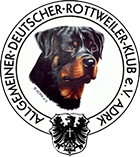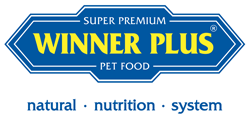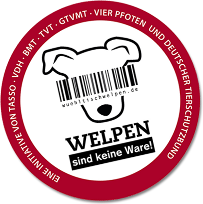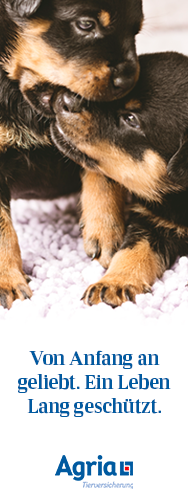| ADRK |
| Allgemeiner Deutscher Rottweiler-Klub e.V. |
Focus on animal food: meat
In the new Focus on Food section, the focus is on food science, i.e. the composition and possible uses of various frequently used components in dog food and fresh rations are explained. This issue deals with the use of the "classic" meat in dog food. You can find out here what the most important nutrients are and that not all meat is the same.
What nutrients does meat provide?
Meat is generally understood to be the muscle tissue of animals and humans. In dogs, the digestibility of meat is considered to be very high. In contrast, internal organs, for example, are often less digestible, even if they have a similar protein content. The best known nutrient that meat provides is protein. Proteins are comparatively large molecules made up of individual amino acids. Of course, not every protein has the same structure, i.e. the amino acid patterns differ significantly depending on which protein is used. Meat is a protein source that has a favorable amino acid pattern for dogs, which explains, among other things, the high digestibility of meat.
Other proteins, such as many vegetable proteins, have a less favorable pattern and are therefore less valuable for the dog. In addition to proteins, meat also contains varying amounts of fat and fatty acids. Fish in particular is characterized by a high content of essential fatty acids (see "Every type of meat is different"). Protein and fat are the energy-providing components, whereas meat does not contain carbohydrates. If you want to use meat as animal feed, you also need to know the concentrations of the various minerals and vitamins it contains. Like most animal protein sources, meat also contains a high level of phosphorus, but basically no calcium. If you want to create a ration containing meat, you must therefore always ensure that there is an extra calcium balance, as otherwise there will be a severe lack of calcium.
In addition to calcium, meat is also low in sodium, so it may be necessary to compensate for this. The fat-soluble vitamins A and D are virtually absent in meat, but it contains higher levels of vitamin B12. Vitamin B12 is the only vitamin that only occurs in animal tissue, so a deficiency is inevitable if a purely vegetarian diet is fed without supplements.
What do I need to bear in mind when using fresh meat?
Fresh meat has a relatively high water content, which generally makes it susceptible to spoilage organisms. In addition, raw meat can harbor infectious agents, including various bacteria, viruses and parasites such as tapeworms. Some of these pathogens are so-called zoonotic pathogens, i.e. they can be transmitted from animals to humans. If you want to work with raw meat, you should therefore ensure a high level of hygiene during processing. Even if many dogs show no clinical signs of illness after eating meat contaminated with infectious agents, they can excrete the pathogens in their feces and thus endanger other dogs and humans.
To ensure that the animal's food does not pose a risk, wet and dry food is treated with heat, as this safely destroys various infectious agents. Incidentally, the dangerous Aujeszky's virus, which can be found in raw pork, is also very heat-labile and is therefore safely killed by heating. If you want to work with fresh meat, you should therefore always heat it well. The digestibility of meat is not negatively affected at normal household temperatures, i.e. it makes no difference to the dog whether it eats the meat raw or cooked. Accordingly, high protein digestibility is also achieved in commercial dry and wet foods.
Every type of meat is different
The energy content of meat can vary greatly. This is primarily due to the fact that the fat content varies between the animal species providing the meat. Meat can therefore be roughly divided into two categories: high-fat (e.g. beef) and low-fat (e.g. chicken) types of meat. High-fat meats are therefore somewhat higher in energy than low-fat meats and can therefore be used, for example, for dogs that have an increased energy requirement. In addition, the exact fat content varies depending on feeding, housing conditions and the time of year.
Of course, it also depends on the cut of meat used. Pork belly, for example, is often riddled with fat deposits, whereas schnitzel is a very lean cut. The fatty acid pattern also differs depending on the animal species: beef is characterized by a comparatively high content of saturated fatty acids, whereas pork and poultry have a higher content of unsaturated fatty acids. Particularly high levels of essential fatty acids are found in fish and the products derived from them, such as fish oil. There are also differences in minerals. For example, although the copper content of beef is quite high overall, the copper can hardly be effectively utilized by the dog.
Ration design (incorrect supply and optimal supply)
Due to the nutrients or nutrient deficiencies contained in meat, it is already clear that meat is not a "complete feed". If meat is fed too much or exclusively, there will inevitably be a massive oversupply of protein and phosphorus, as well as a lack of calcium and other important elements. High protein and phosphorus levels have a predisposing effect on urinary stones and put a strain on the metabolism. The combination of an excessive phosphorus content with an insufficient calcium content appears to have a particularly negative effect on kidney function and can promote skeletal disorders, especially in dogs that are still growing.
How high the proportion of meat in the ration should be depends primarily on the protein requirements of the dog in question. The protein requirements of dogs are often overestimated. In general, a growing dog has a high protein requirement, which is why a ration for a young dog can be more meat-heavy. However, if the dog suffers from liver or kidney disease, for example, the protein content of the ration should be significantly reduced. If fish is used as a source of protein, it must be heated, as raw fish sometimes contains enzymes (thiaminases) that can destroy vitamin B. In addition to a protein source, a needs-based ration also needs to be supplemented with fat, carbohydrates and fiber as well as minerals and vitamins. As the preparation of such a ration requires a great deal of specialist knowledge, it should always be prepared by a specialist. The ratio between the individual components depends on the respective nutritional requirements and the underlying characteristics and needs of the individual dog.










